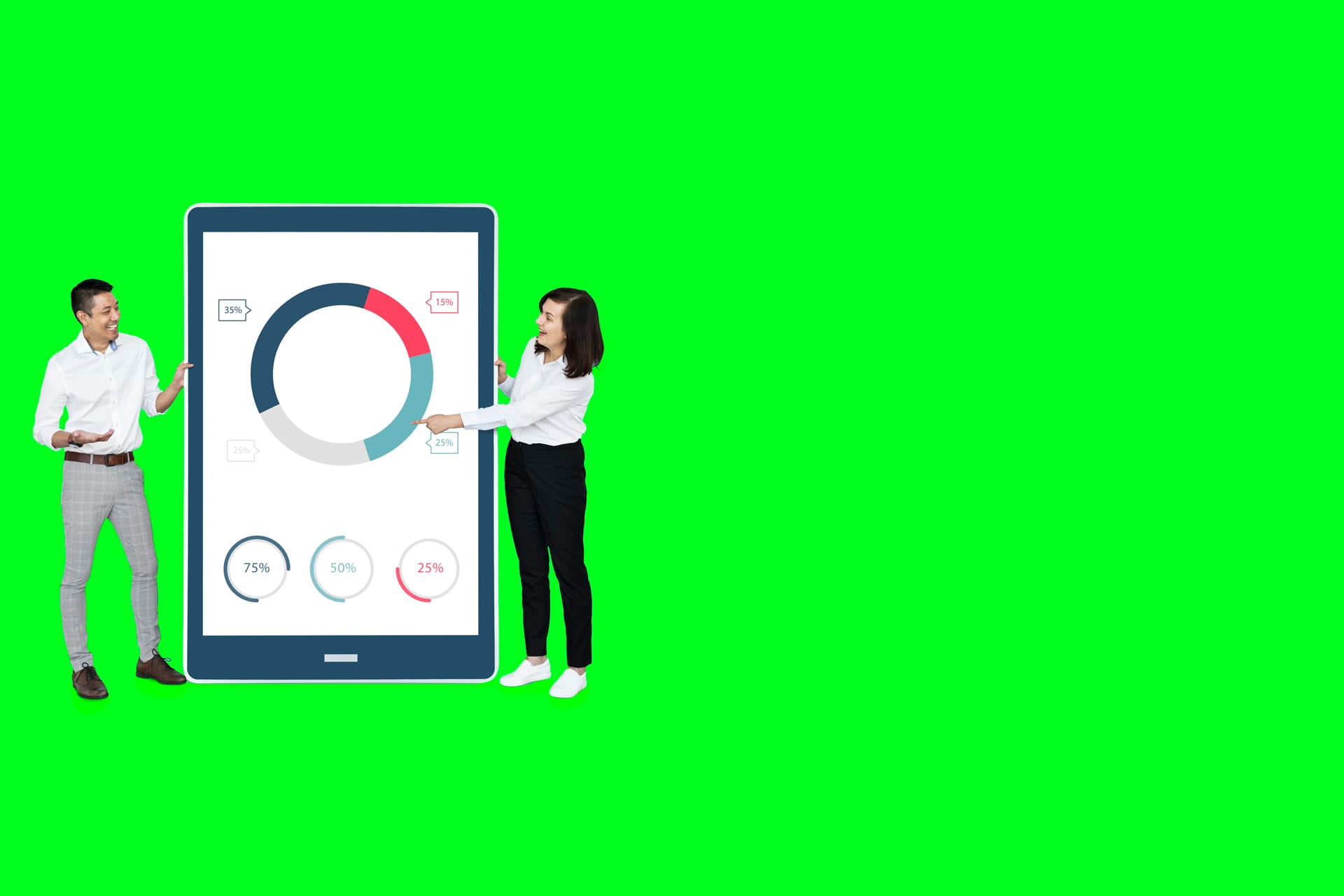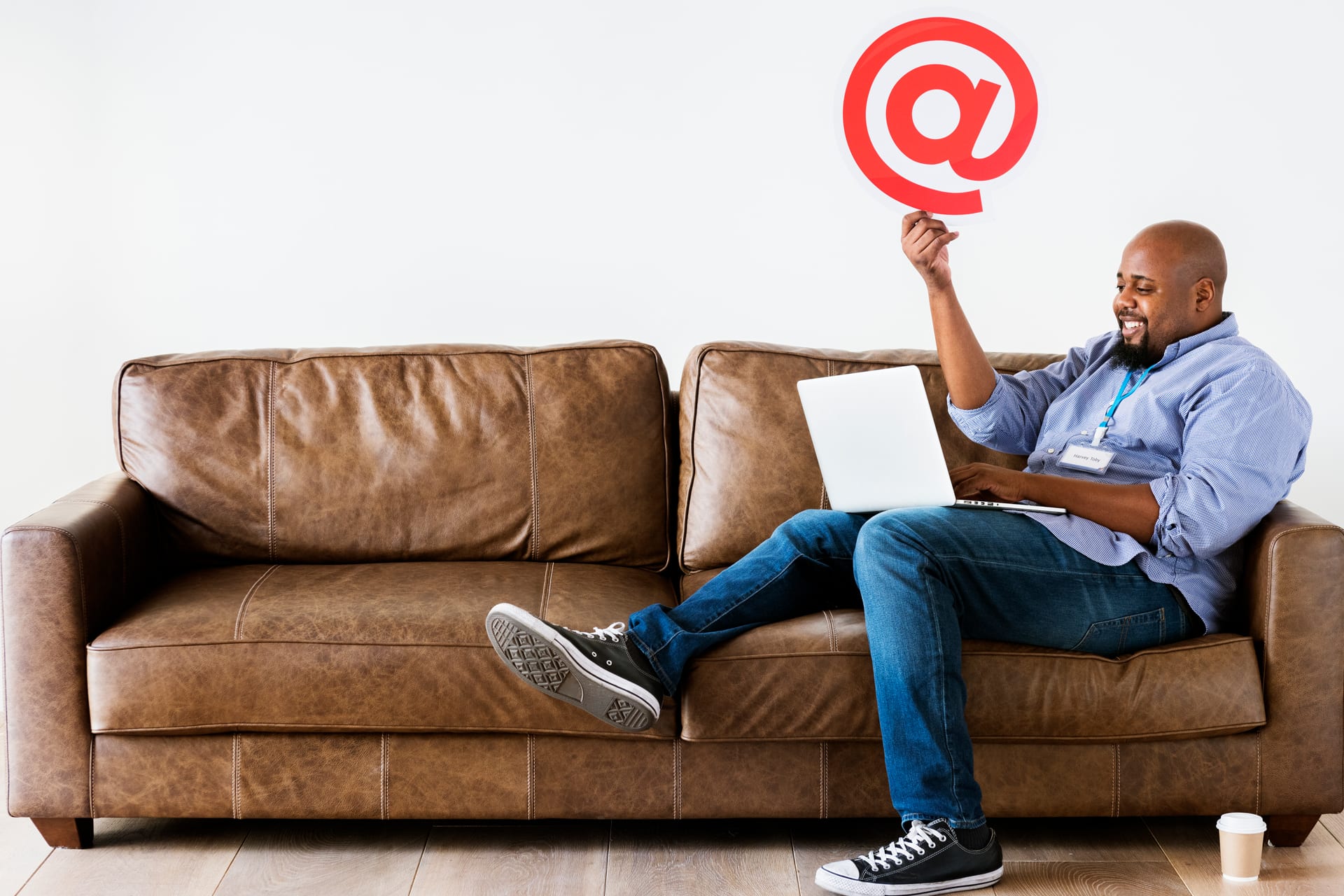Email marketing works best when you segment your email list.
That’s a fact.
And, as an advocate of email marketing, I’m all for anything that makes it work better.
However, what does it mean to segment your email list and how do you do it?
If you want to get email marketing results like a pro, you need to know.
You’re in luck because I’m going to teach you.
Contents
What Does “Segment Your Email List” Mean?
Let’s start with a definition.
Email list segmentation is the process of dividing your email list into segments – or small groups – so you can send something more targeted in your emails.
Segments contain captured leads who share similarities, like the product they’re interested in or the income bracket they fit into.
When you segment your email list, you can better understand what separates the different segments.
Using that understanding you can create better emails for them that speak to them better.
Segmenting your email list can change your success instantly. Click To TweetThat’s going to improve your odds of converting them to customers.
It’s going to make your emails more successful, too.
Data shows that when you segment your email list, you wind up with a 14.31% higher open rate, 100.95% higher clicks, and 93.7% lower unsubscribe rates.
Those stats are compared to the same list when it hasn’t been segmented.
Segment Your Email List To Improve Your Impact
Obviously, your email marketing goal is to convert the most leads possible to customers.
If you segment your email list properly, you’ll boost your odds tremendously.
However, you might not know how to do that.
Unless you’re an email marketer by trade, the idea of segmenting your email list might be foreign.
But, since we’ve now covered what it is, I want to share 13 pro tips that will help you segment your email list and get those results we were talking about.
This is what you want to master.
Welcome Everyone To Your List
New subscribers are the first email segment you need to work with.
Leaving these brand-new leads with no idea what’s going on or what they’ve just signed up for is, well, rude.
Plus, it will heighten their odds of unsubscribing or marking your email as spam later.
Instead, welcome these new additions to your list with a welcome email.
Welcome emails are a great opportunity to introduce your new lead to the way your brand does things.
Some companies use them to share the benefits of being a subscriber, like specials, product announcements, and content.
These emails are also a chance to set expectations, like how frequently your subscribers should expect a new email.
You could use a welcome email to introduce other clients/users, your blog content, or instructions on what your subscriber should do next.
If you’re ambitious, you could send a series of welcome emails that do all the above in the first few days.
The key is that you’re beginning a relationship with your subscribers that you intend to grow.
You’re also earning new information to help segment your email list further.
Find Out What People Want From Your Email Marketing
Have you bothered to ask what your email list prefers?
The truth is, most brands don’t.
Only about 14% of marketers allow their email list subscribers to choose the frequency they receive emails.
That’s not giving the people who’ve given you permission to market to them a whole ton of choice in how that happens, is it?
Use a preference center to allow your audience to decide how often they receive communications and what kind they receive.
That’s going to stop a lot of people from hitting that “unsubscribe” link.
If you send people who hit that link to your email preference center, you might even keep a few of them.
Some companies report holding on to 25% of the people who hit the “unsubscribe” link by allowing them to update their preferences at that time.
Use these preferences to further segment your email list and see higher retention and engagement.
What’s Your Email List Interested In?
If you’re subscribed to a YouTube or Spotify email, you’re probably used to seeing recommendations that interest you.
They’ll send you regular content that you’ll probably like.
But do you think they send that suggestion to all their users?
Spoiler alert: they don’t.
Platforms like these use data about the content you consume to customize your emails.
They add you to segments based on the things you watch or listen to on their services to custom tailor their suggestions.
The goal of their emails is to bring you back to their platforms to spend more time.
That means their recommendations need to be good ones.
If you’re tracking what your leads do on your site, as well as collecting psychographic data from third-party providers, you can do the same.
Find out what they’re interested in as it relates to your industry, company, and product or service, then segment your email list based on them.
At that point, you can deliver emails to them that relate.
By learning to speak their language, you’ll do a better job of converting them later.
Where Are The People On Your Email List From?
For many small businesses, your location in relation to those of your email list matters.
This is especially true for brick and mortar companies.
When you’ve got an event, sale, or other special announcement tied to a specific location, it might not make sense to send it to your whole list.
Location-specific announcements tend to fare much better within a certain radius of the location.
That radius may vary depending on the industry or nature of the announcement, but it exists none the less.
As a result, it’s important to grab your subscriber’s location when they sign up.
There are many ways to do this.
One of which is to simply ask.
Others include GeoID detection of the IP address of the computer used to fill the form out or obtaining additional demographic data from third-party sources.
If you segment your email list with this data, your location-focused events will have much greater success.
Your Email List Came For Specific Information
Your website visitors give you so much information from the pages of your site they visit and the lead magnets they download.
If you’re doing a great job tracking them on your site, you can begin to build a profile of the individual lead.
You can learn what things about your company and industry they’re interested in.
The lead magnets they opt-into will let you know what pain-points they face.
When they choose a webinar over an eBook it tells you the nature of the way they learn.
By using these tells to segment your email list you can better tailor your content for them.
Video content can go to those who came for a webinar.
Blogs might get sent to the eBook person.
As people begin to receive content in the format they prefer, they will respond better.
They’ll get more comfortable with the way you communicate.
In their comfort, they’re more likely to become your clients.
Group The Different Ages Of Your Lead List
Chances are you have leads that come from more than one age range.
After all, every age group has access to the internet.
Clearly, you wouldn’t talk to a senior citizen the same way you would a college student.
And it’s likely that one age group is less inclined to buy from you than another.
Knowing the age range of your list can help you make any adjustments that you need to.
For example, if you know children can’t buy your product, you might prune anyone off your list under the age of 16.
Or if you sell auto insurance, you might segment your email list between new drivers and those with a great driving record.
I’d bet you don’t want to send a multi-car discount to a high-school-age driver.
By using age divvy up your list, you can adjust your message appropriately for each email segment.
Segment Each Person On Your Email List By Their Buyer Persona
By now, you ought to have your buyer personas developed.
They should include all the ideals for the demographic and psychographic information we’ve talked about collecting.
With all that information, each of your leads should be identifiable as one of your buyer personas.
So, you need to segment your email list according to those personas.
Combining like personas as an email segment allows you to send hard-hitting sales emails later in the process.
As a part of developing buyer personas, you’ve determined exactly what makes these particular leads tick.
But there’s a bonus as well.
When one of your leads doesn’t fit into a buyer persona, you might find that you have an anomaly.
However, if enough don’t fit, you may discover similarities between them, introducing you to a whole new buyer persona you hadn’t considered.
That creates another list segment and a whole new angle for your email marketing.
How About Your Email List’s Purchase History
Purchase history can tell you a lot about the approach you should take with someone on your email list.
If someone has bought from you before, you can work towards cross-sells and up-sells based on what they bought.
A list member who purchases often might be a good candidate for a loyalty program or a special discount.
And those who purchase over again on a routine might be prime for reminders and discounts right around their normal purchase times.
Using purchase behavior to segment your email list can give you a leg up with your clients.
When you can reach out to them with what they want or need when they want or need it, you reduce the likelihood of a competitor catching their attention.
Aside from just their purchase history, you can survey your email list.
Find out how often they’ve bought from your industry in the past.
Ask them what phase of the purchase cycle they’re in.
Those questions can not only help you segment your email list but help craft better emails to send.
By sending them what they need when they need it, they’re not likely to go anywhere else.
How Did The Person On Your Email List Do Business With You?
When your physical location comes into play as often as your website does, you need to pay attention to where a customer did business with you.
This can be especially important for retail companies.
Segment your email list based on where your customer shopped with you.
Using this information, you can offer the right discounts, announcements, and invitations to the right people.
It would be senseless to offer an eCommerce customer who lives half-way across the country a coupon that can only be redeemed in-store.
Likewise, you need to make sure to invite your in-store customers to special on-site events.
Remember that, even though you have an online location, you want to encourage in-store customers to keep visiting you there.
And those online customers need to continue coming back to your website.
Knowing who visits where will help you keep both alive.
Which Email List Members Came To Your Event?
Off the back of in-store customers, sometimes you’re likely to hold or attend events.
Especially common in niche industries or for B2B businesses, events are great ways to connect with your clients.
Whether or not your leads attend those events is important information to segment your email list with.
Attendees for events you hold are likely to return.
You might want to send them advanced invites or ticket sales.
It also might be a great idea to reach out to them after events for feedback.
Those who don’t attend need those FOMO emails.
You know, the ones that share what they missed out on.
Sending recaps and highlights to people who missed the event helps to assure they don’t miss a future one.
And if it’s not your event, you can use the information you got about your leads from the event to segment your email list.
Since you met them on-site, either after they became your lead or resulting in a new lead, you can build upon the connection you made.
Use everything you can about the event to further segment your email list.
What was it about, where was it, what kind of event was it, and who RSVP’d but didn’t make it?
These are all important details that can help you tailor your emails in the future.
The Phone VS Desktop Joiners
The device someone used when they joined your list is important.
Yet, only 28% of marketers are using that information to group leads.
This is some of the information you must use to segment your email list.
With 78% of people using their phones to check their email, you need to know where your emails are being viewed.
In fact, data shows that 55% of all email opens happen on mobile phones.
When you know where people are opening your emails, you can design your emails accordingly.
You can also fill them with information that pertains to their favored device.
Obviously, responsive design is necessary.
However, you’ll also want to send mobile-based coupons to those who primarily use their phones, while something better for a printer might make sense for desktop users.
Remember that these customized emails improve the odds that your email list leads will become customers.
Some Of Your Email List Are Referrals
Referral and affiliate programs can often be a huge source of leads.
Those referrers and affiliates can’t be neglected.
Design specific campaigns for each of them and, when you receive a referral from them, make note of it.
For example, offering a reward to the affiliate who brings in the most referral sales over the next 30 days could generate a huge quantity of leads.
Tag each referral with the affiliate who brought them in, then email a top 10 list to your affiliates every week.
If you segment your email list by who brought the lead to you, you’ll also know how to address what brought them to you.
For example, maybe you don’t have an affiliate program, but one of your other clients referred them.
You might send an email detailing some of the referrer’s situation as a case study.
Show these high-value subscribers exactly how you can help them.
It wouldn’t hurt to send the referrer a special “thank you” email either.
Yet another way to segment your email list.
Those who refer people can get a special gift, exclusive discount, or access to special VIP content that nobody else gets access to.
Show your appreciation for their loyalty and they’ll gladly give more.
Do Certain Parts Of Your Email List Spend More Over Time?
Every customer has a lifetime value for your company.
That term describes the amount of money they’re likely to spend over the time they’re your client.
But some client groups will likely spend less than others over time.
And some will spend far more.
When you identify who fits into which category, you have a valuable bit of information to segment your email list with.
Each CLV group can be ranked by how much you earn for the time you spend trying to convert them to a sale.
This gives you the opportunity to decide how much time you want to spend focused on them.
It’s especially valuable for the customers who represent a line of business you’re thinking about cutting.
Obviously, you want to convert them to another line of business or pass them off to a company you’d trust to continue taking care of them.
As for the customers that will earn you more over time, you might want to spend a little more time and offer them a little special treatment to earn more sales from them.
Segment Your Email List To Become An Email Champion
The best email marketers do excellent jobs at grouping their leads.
If you want to have massive success, you’re going to have to master these ways to segment your email list.
Segmenting your email list will help you continually outshine your competition. Click To TweetWhen you do, these pro methods will help you reach the right person with the right message every time.
Ultimately that will lead to more sales, more revenue, and more growth.





